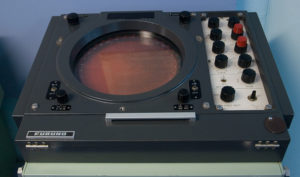Sonar History
Although some animals (dolphins, bats, some shrews, and others) have used sound for communication and object detection for millions of years, use by humans in the water is initially recorded by Leonardo da Vinci in 1490: a tube inserted into the water was said to be used to detect vessels by placing an ear to the tube.
In the late 19th century an underwater bell was used as an ancillary to lighthouses or light ships to provide warning of hazards.
The use of sound to “echo-locate” underwater in the same way as bats use sound for aerial navigation seems to have been prompted by the Titanic disaster of 1912. The world’s first patent for an underwater echo-ranging device was filed at the British Patent Office by English meteorologist Lewis Fry Richardson a month after the sinking of the Titanic, and a German physicist Alexander Behm obtained a patent for an echo sounder in 1913.
The Canadian engineer Reginald Fessenden, while working for the Submarine Signal Company in Boston, built an experimental system beginning in 1912, a system later tested in Boston Harbor, and finally in 1914 from the U.S. Revenue (now Coast Guard) Cutter Miami on the Grand Banks off Newfoundland. In that test, Fessenden demonstrated depth sounding, underwater communications (Morse code) and echo ranging (detecting an iceberg at 2 miles (3 km) range). The “Fessenden oscillator”, operated at about 500 Hz frequency, was unable to determine the bearing of the iceberg due to the 3-metre wavelength and the small dimension of the transducer’s radiating face (less than 1/3 wavelength in diameter). The ten Montreal-built British H-class submarines launched in 1915 were equipped with Fessenden oscillators.
During World War I the need to detect submarines prompted more research into the use of sound. The British made early use of underwater listening devices called hydrophones, while the French physicist Paul Langevin, working with a Russian immigrant electrical engineer Constantin Chilowsky, worked on the development of active sound devices for detecting submarines in 1915. Although piezoelectric and magnetostrictive transducers later superseded the electrostatic transducers they used, this work influenced future designs. Lightweight sound-sensitive plastic film and fibre optics have been used for hydrophones (acousto-electric transducers for in-water use), while Terfenol-D and PMN (lead magnesium niobate) have been developed for projectors. More details

